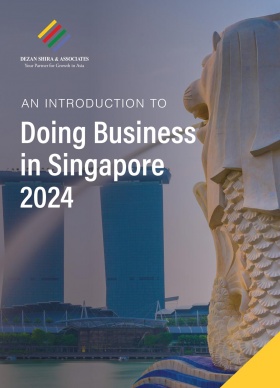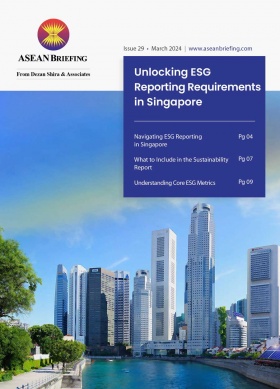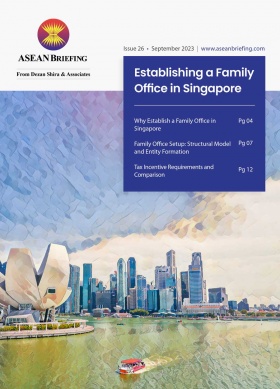Singapore’s Economic Outlook for the Next 5 Years
Sponsored Post
Thanks to decades of targeted policies and actions, Singapore has become one of Asia’s largest and most dynamic economies. The Southeast Asian country has a GDP of US$525.228 billion, a young workforce, and over a million foreign talents working in the rapidly expanding working class. Due to a robust and secure business environment, Singapore’s economy is positioned for long-term sustainable growth.
Singapore’s economy today
Just over 50 years ago, Singapore was a poor economy with high unemployment and inadequate infrastructure. But the country has developed leaps and bounds, reflecting its tenacity and economic vision. The projections for the next five years reflect cautious optimism driven by development in key sectors. Manufacturing, services, investment, and forex trading in Singapore, as well as e-commerce, logistics and supply chain, and information and communications technology (ICT), contribute the most to Singapore’s economic growth. Following decades of rapid industrialization, Singapore has a highly valued economy with growth projections that are competing with larger economies.
Key growth drivers
It is necessary to understand the drivers of Singapore’s rapid growth to predict future performance with some accuracy. The four growth drivers are:
- Investment climate
Successive Singaporean governments showed commitment to fiscal policies that support investment initiatives and public spending that drive economic growth. The Island enhances business efficiency with public infrastructure, business-friendly regulatory frameworks, intellectual property protection, and efficient customs processes. The nation also attracts over US$56 billion in foreign direct investment (FDI).
- External demand
Singapore’s manufacturing products and general services are in high demand in Asia and Asia-Pacific. The local business sector has construction, leading its growth in the goods-producing industry, thanks to expanding projects in the public and private sectors. ICT and increasing foreign talents also create a robust demand for related services. Global trade and manufacturing resurgence is excellent for Singapore’s export-dominated economy to thrive. The value of the nation’s total exports in services more than doubled within nine years from 2014 – 2023.
- Travel and tourism
Over 13 million tourists visited Singapore in 2023; tourism and travel is one of the nation’s vibrant sectors. In a February 2024 report, the Singapore Tourism Board noted that tourism receipts reached US$24.5 – 26 billion, marking a significant change from the previous years.
- A diverse economy and skilled workforce
Singapore has established industries and emerging fields like agritech, medtech, sustainability, and clean energy that contribute to economic diversification. The nation also has foreign talents, making up about 36 percent of its workforce, and local talents, skilled in various industries.
Economic projections for 2024
At the start of 2024, the Ministry of Trade and Industry (MTI) set the GDP growth forecast at 1.0 to 3.0 percent. But economists have now upgraded that forecast to a specific 2.4 percent for the remainder of 2024. This is due to solid growth in the year’s first half and a steady inflation rate.
Economists also predicted higher employment figures for 2024. They were not wrong, as jobs grew by 16,000 for the first half of 2024. The Net Employment Outlook (NEO) is up 9 percent more than in 2023, and the unemployment rate is 2.1 percent overall.
Projections for 2025 – 2028
Although Singapore had a tough year in 2024, the Island nation held through thanks to its robust economic foundations. The increasing focus and support for innovation in the manufacturing and services sector helps Singapore to keep up with modern dynamics.
Inflation
Analysts predict Singapore’s inflation will remain close to the target level (2 percent), as revealed by the Monetary Authority of Singapore (MAS). The apex banks recently announced they would keep interest rates unchanged as they expect more ‘loosening up’ by January 2025.
GDP and sustained growth
At the current rate, Singapore’s GDP will reach US$548.15 billion by 2025, US$573.46 billion by 2026, US$573.46 billion by 2028, and US$626.28 billion by 2028. A 19 percent growth in GDP over four years will see Singapore’s economy expand rapidly.
Manufacturing sector
The nation’s manufacturing sector is projected to hit a 1.48 percent compound annual growth rate (CAGR) from 2024 to 2029. Data suggests a recovery from the 2024 dip, stimulating growth in the sector in 2025.
Foreign direct investment
The United States, Netherlands, Mainland China, Japan, and Hong Kong provided a significant share of Singapore’s US$151 billion FDI in 2023. If this trend continues, FDI will reach higher figures in the next five years.
Potential risks and challenges
There are four key challenges and risks facing Singapore’s economic growth:
- Geopolitical dynamics: Investors must prepare for global changes in political alliances. The Asia-Pacific agreements and BRICS are significant to Singapore’s future, given the involvement of its major international trading partner, China.
- Domestic challenges: Domestic changes will also occur, especially in climate conditions, education, population, household income, immigration, and penal policies. These factors influence Singapore’s economy at various levels.
- Labor market dynamics: Changes in employment figures, Professional, Managerial, Executive, and Technical (PMET) vacancies, and newly created jobs will impact the economy. There’s also a shift towards skill-based employment; reskilling and upskilling will become valuable.
- A slowdown of major economies: If countries like China experience slow economic growth, the dip in demand for its services and manufactured products will hurt Singapore’s economy. These external changes are of great concern, especially as many countries are considering alternative options for foreign trade.
Investing in Singapore
Singapore remains one of the best countries for investment in 2024 and beyond. Growth in GDP, positive employment rate, and demand for manufacturing goods and services will drive higher local and foreign investments. As its industries recover from global pressures, Singapore will experience faster economic growth over the next five years. Investors must consider market dynamics and changes in political conditions when planning their portfolios.
About Us
ASEAN Briefing is one of five regional publications under the Asia Briefing brand. It is supported by Dezan Shira & Associates, a pan-Asia, multi-disciplinary professional services firm that assists foreign investors throughout Asia, including through offices in Jakarta, Indonesia; Singapore; Hanoi, Ho Chi Minh City, and Da Nang in Vietnam; besides our practices in China, Hong Kong SAR, India, Italy, Germany, and USA. We also have partner firms in Malaysia, Bangladesh, the Philippines, Thailand, and Australia.
Please contact us at asean@dezshira.com or visit our website at www.dezshira.com and for a complimentary subscription to ASEAN Briefing’s content products, please click here.
- Previous Article India-Thailand Bilateral Trade and Investment
- Next Article What Makes Singapore a Prime Location for Semiconductor Companies







